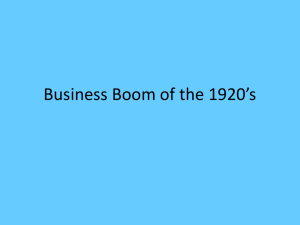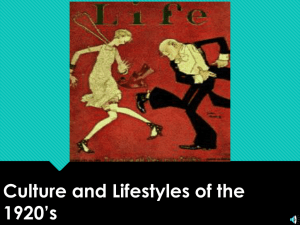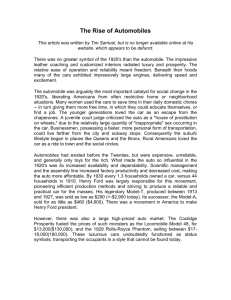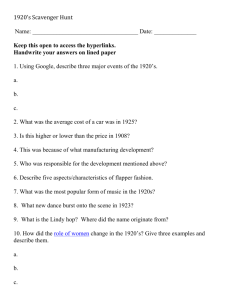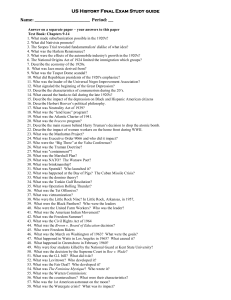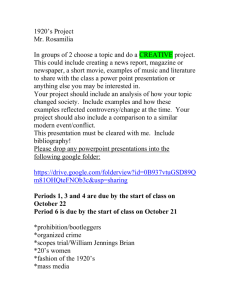Chapter 17 Section 2 Powerpoint
advertisement
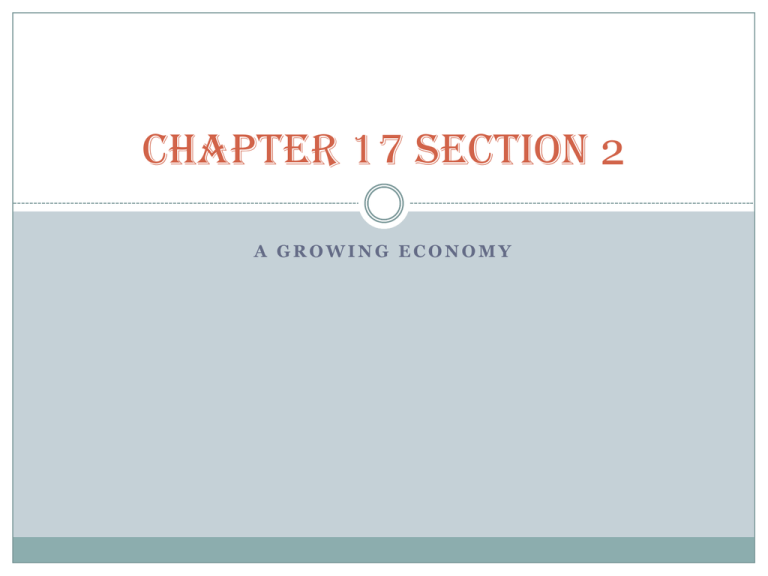
CHAPTER 17 SECTION 2 A GROWING ECONOMY THE RISE OF NEW INDUSTRIES Mass production and the assembly line allowed new industries, such as automobile and airplane manufacturing, to grow. THE ASSEMBLY LINE AND THE MODEL T Assembly Line: developed by Henry Ford—divided operations into simple tasks and cut unnecessary motion to a minimum. By 1925-a Ford car was rolling off the line very 10 seconds. Model-T: The “Tin-Lizzie” or “flivver”. Example of “elasticity”— the economic concept of how sensitive product demand is to price. 1908- sold for $850 1914: sold for $490 1925 sold for $295 Lower the cost per car and increase the volume of sales: Business philosophy High Wages for Workers Ford increased workers’ Strings attached: wages in 1914 to $5 a day. (double the salary) Also reduced the workday to 8 hour shifts. Did this to build up workers loyalty and to undercut union organizers. Sociological Department: Set requirements workers had to meet. Ex. Renting space to nonfamily members in home forbidden. SOCIAL IMPACT OF THE AUTOMOBILE Cars revolutionized American life. Eased the isolation of rural life and enabled more people to live farther from work. Other forms of transportation such as the trolley became less popular. Consumer Goods NEW GOODS In response to rising disposable income—many other new goods came on the market. Electric razors, facial tissues, frozen foods, hair color Household cleaning products Electric irons, washing machines, refrigerators, Mouthwash, deodorant, cosmetics, and perfumes. Birth of the Airline Industry December 1903: Wilbur and Orville Wright first crewed powered flight in history. Glenn Curtiss: invented aerilons (surfaces attached to wings that can be tilted to steer the plane. His company began to build and sell first airplanes 1925: Congress passed the Kelly Act: authorized the Post Office to contract with private airlines to deliver mail. 1927: Charles Lindbergh made the solo transatlantic flight. By end of 1928: 48 airlines serving 355 American cities. RADIO INDUSTRY November 1920-news of Harding’s landslide election win broadcast on KDKA in Pittsburgh—one of first public broadcasts. 1926:NBC set up. 1928: CBS set up. CONSUMER SOCIETY Easy Consumer Credit Managerial Revolution The idea of credit Industries began to create became more appealing in the 1920’s because people began to believe in their ability to pay it off over time. Mass Advertising: Became popular to persuade people to buy these new items. modern organizational structures. Began to split companies into divisions such as sales, marketing, and accounting. Then needed managers to run these divisions. Helped to expand the size of the middle class. WELFARE CAPITALISM The Decline of Unions Uneven Prosperity Welfare Capitalism: Thousands of African Companies allowed workers to buy stock, participate in profitsharing, and receive medical care and benefits. Open Shop: workplace where employees were not required to join a union. Decline of unions in 1920’s because of benefit’s programs. Americans held factory jobs during WWI. When servicemen came home, they lost those jobs. Native Americans were isolated on reservations (although granted citizenship in 1924) Immigrants from Europe found it difficult to get work. Deep South was left out of the economic boom. THE FARM CRISIS American farmers did not share in the prosperity of the 1920’s. They earned approx. 1/3 less than workers in the rest of the economy. Even though technology gave them advancements in equipment, the demands did not really increase so prices stayed low.

